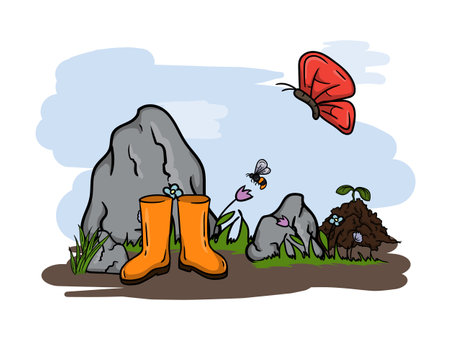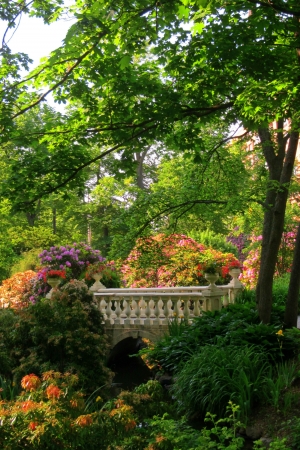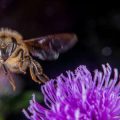1. Understanding the Benefits of Pollinator Gardens
Pollinator-friendly gardens aren’t just a trend—they’re an easy and effective way to support your local environment, help your vegetable patch thrive, and make your yard more beautiful. If you’ve ever wondered why so many people in the U.S. are talking about pollinators like bees and butterflies, here’s what you need to know.
Why Are Pollinator Gardens Important?
Pollinators, such as native bees, butterflies, hummingbirds, and even bats, play a crucial role in helping plants reproduce. Without them, many of our favorite foods—think tomatoes, cucumbers, apples, and berries—would be much harder to grow. Plus, these helpful creatures keep local ecosystems healthy by supporting plant diversity and providing food for other wildlife.
The Local Impact: Your Backyard Matters
You don’t need acres of land or a big budget to make a difference. Even a small garden bed or some pots on your porch can attract pollinators. By choosing the right plants and providing water and shelter, you’re creating a safe space for these essential creatures right in your own backyard.
Benefits of a Pollinator-Friendly Garden
| Benefit | Description |
|---|---|
| Boosts Fruit & Veggie Yields | More pollinators mean better harvests from your garden crops. |
| Supports Native Wildlife | Native bees and butterflies rely on these spaces for food and shelter. |
| Enhances Biodiversity | A variety of plants attracts different types of pollinators, leading to a healthier ecosystem. |
| Adds Natural Beauty | Colorful flowers and fluttering butterflies make your garden more inviting. |
| Reduces Need for Chemicals | Healthy ecosystems naturally control pests, so you can use fewer pesticides. |
Fun Fact: Not All Bees Are Alike!
The U.S. is home to over 4,000 species of native bees—not just honeybees! Many are tiny and solitary but do just as much (or more) work in pollinating our gardens as their famous cousins.
Your First Step Toward a Thriving Garden
Understanding the benefits is the first step in creating a pollinator-friendly garden without breaking the bank. Next up: how to choose the right plants that attract pollinators and fit your budget!
2. Choosing Low-Cost, Native Plants
If you want to build a pollinator-friendly garden on a budget, choosing the right plants is key. Native plants are not only affordable but also adapted to your local climate, meaning they need less water and care. Plus, they attract bees, butterflies, and hummingbirds that are native to your area.
Why Go Native?
Native plants support pollinators because theyve evolved together over time. These plants provide the food and shelter local insects and birds rely on. Theyre also easier to grow since theyre used to your region’s weather and soil.
How to Find Budget-Friendly Native Plants
- Local Plant Sales: Many communities hold native plant sales in spring or fall, often at botanical gardens or through environmental groups. Prices are usually lower than at big-box stores.
- Seed Swaps: Check out neighborhood seed swaps or community gardening events. You can trade seeds with others for little or no cost.
- Propagate Your Own: Learn basic plant propagation techniques like dividing perennials or taking cuttings from healthy native plants.
- Public Gardens: Some public gardens offer “dig days” where you can help with maintenance in exchange for free cuttings or divisions.
Popular Low-Cost Native Plants by Region
| Region | Flowering Plants | Shrubs | Attracts |
|---|---|---|---|
| Northeast | Black-eyed Susan, Bee Balm | Elderberry, Serviceberry | Bees, Butterflies |
| Southeast | Coreopsis, Purple Coneflower | Beautyberry, Wax Myrtle | Bees, Hummingbirds |
| Midwest | Purple Prairie Clover, Wild Bergamot | Ninebark, American Hazelnut | Butterflies, Bees |
| West Coast | California Poppy, Lupine | Coyote Brush, Toyon | Bees, Birds |
| Southwest | Purple Sage, Desert Marigold | Brittlebush, Apache Plume | Moths, Bees |
Tip: Mix It Up!
A diverse mix of flowers that bloom from spring through fall will keep pollinators coming back all season long. Try grouping plants with similar water needs together to save both time and money on maintenance.

3. DIY Garden Design and Repurposing Materials
Transforming your yard into a pollinator haven doesn’t require expensive landscaping. With a little creativity and a willingness to repurpose everyday materials, you can create a beautiful, functional garden that attracts bees, butterflies, and hummingbirds—all without breaking the bank.
Get Creative with Upcycled Garden Features
Think outside the box when it comes to garden design! Many items that would otherwise end up in the landfill can be transformed into useful and attractive garden features. Here are some ideas to get you started:
| Repurposed Item | Garden Use |
|---|---|
| Old wooden pallets | Raised garden beds or vertical planters |
| Mason jars or glass bottles | DIY bird feeders or vases for cut flowers |
| Broken terra cotta pots | Mini habitats for beneficial insects |
| Tires (painted) | Flower planters or herb gardens |
| Used bricks or stones | Garden borders or stepping stones |
| Buckets and tubs | Container gardens for native plants |
| Old ladders | Trellis for climbing plants like morning glories or beans |
Designing Your Pollinator-Friendly Layout on a Budget
You don’t need fancy landscaping software to map out your garden. Grab some graph paper and sketch your space—or use free online tools. Group plants with similar water and sun needs together, and be sure to leave open areas for pollinators to land and bask in the sun. Try mixing heights by using taller plants in the back and shorter ones up front, creating both visual interest and shelter for pollinators.
Tips for DIY Garden Beds and Features:
- No-dig beds: Layer cardboard, compost, and mulch right on top of your lawn to create new planting beds without heavy labor or expense.
- Natural pathways: Use wood chips, gravel, or even grass clippings to mark paths through your garden—no need for concrete!
- Pile rocks or logs: Create small rock piles or log stacks in corners; these offer nesting spots for solitary bees and shelter for butterflies.
- Rainwater collection: Set up a rain barrel using a recycled food-grade barrel to water your garden naturally.
Quick Project: Make a Bee Bath from Found Items
- Find a shallow dish or pie pan.
- Add small stones so bees can land safely.
- Fill with fresh water and place it near flowering plants.
Your creativity is your best resource! By giving new life to old items, you’ll save money—and help local pollinators thrive in your backyard.
4. Providing Water and Shelter on a Budget
Simple Water Sources for Pollinators
Pollinators like bees, butterflies, and birds need access to fresh water, but you don’t have to install a fancy pond or fountain. Here are some easy and affordable ideas:
| Water Source | How to Make It | Cost |
|---|---|---|
| Shallow Dish Bath | Place a shallow plate or pie pan in your garden. Add clean water and a few rocks for insects to land on. | $0–$5 (use items you already have) |
| Upcycled Bird Bath | Flip over a terracotta pot base or use an old bowl set on bricks. Fill with water and add pebbles. | $0–$10 (repurpose household items) |
| Pebble Tray | Fill a tray with gravel or marbles. Pour in water just below the surface so pollinators can perch safely. | $1–$5 (dollar store supplies) |
Creating Affordable Shelters and Nesting Spots
Shelter is just as important as food and water for pollinators. You can provide safe nesting areas without breaking the bank by using natural or recycled materials found around your home or yard.
Bumblebee and Solitary Bee Habitats
- Bare Patch of Soil: Leave a small area of bare ground for ground-nesting bees.
- Bamboo Bee Hotel: Bundle up cut bamboo, paper straws, or hollow stems in an empty can or wooden box. Hang it in a sheltered spot.
- Logs and Brush Piles: Stack branches, logs, or even untreated lumber in a corner to create shelter for various insects.
Butterfly Hiding Places
- Flat Stones: Place flat rocks in sunny spots for butterflies to warm themselves in the morning.
- Dense Shrubs or Tall Grass: Allow part of your yard to grow wild for natural cover during storms or at night.
- D.I.Y. Butterfly House: Make a simple box with slits cut into it from scrap wood; mount it on a post away from direct wind.
Quick Reference Table: DIY Shelter Ideas
| Shelter Type | Materials Needed | Estimated Cost |
|---|---|---|
| Bamboo Bee Hotel | Bamboo sticks, tin can, string | $0–$5 (recycled materials) |
| Log Pile Habitat | Branches, logs, twigs from your yard | $0 (yard waste) |
| D.I.Y. Butterfly House | Scrap wood, nails, saw | $0–$10 (scrap supplies) |
| Bare Soil Patch | No materials needed—just clear a space! | $0 |
Add these low-cost water sources and shelters to make your garden an inviting retreat for bees, butterflies, and other essential pollinators—all while sticking to your budget!
5. Maintaining Your Pollinator Garden for Long-Term Success
Keep Your Garden Thriving Without Breaking the Bank
Once your pollinator-friendly garden is planted, regular care is the key to long-term success—without spending a lot of money or time. Here are some easy, affordable tips to keep your garden buzzing and beautiful season after season.
Simple Maintenance Tips
- Water Smart: Water deeply but less often to encourage strong root growth. Early morning is best to reduce evaporation.
- Avoid Chemicals: Skip pesticides and herbicides—they can harm pollinators. Pull weeds by hand or use mulch to suppress them naturally.
- Deadhead Flowers: Snip off spent blooms to encourage more flowers and keep the garden tidy. Leave some seed heads in fall for birds and overwintering insects.
- Add Mulch: Use free or low-cost mulch like grass clippings, leaves, or wood chips from local tree services to retain moisture and reduce weeds.
- Let It Be a Little Wild: Don’t worry about perfection! A little mess provides shelter for bees, butterflies, and other helpful critters.
Seasonal Tasks Made Easy
| Season | To-Do List | Budget-Friendly Tip |
|---|---|---|
| Spring | Clean up dead plant material (leave some for wildlife), spread compost, plant new seeds or divide perennials. | Swap seeds with neighbors or join a local seed library. |
| Summer | Mulch, water during dry spells, deadhead blooms, watch for pests (pick off by hand). | Use rain barrels or saved household water for irrigation. |
| Fall | Leave some seed heads and leaf litter, plant native bulbs, add compost. | Mow leaves into your lawn or garden beds instead of bagging them up. |
| Winter | Avoid heavy clean-up; let plants stand to shelter insects. Plan changes for next year. | Create DIY bee hotels from scrap wood or hollow stems. |
Involve Your Community
If you need help or want more ideas, connect with local gardening groups or neighbors. Sharing tools, seeds, and tips can make maintaining your pollinator garden even easier—and more fun!


